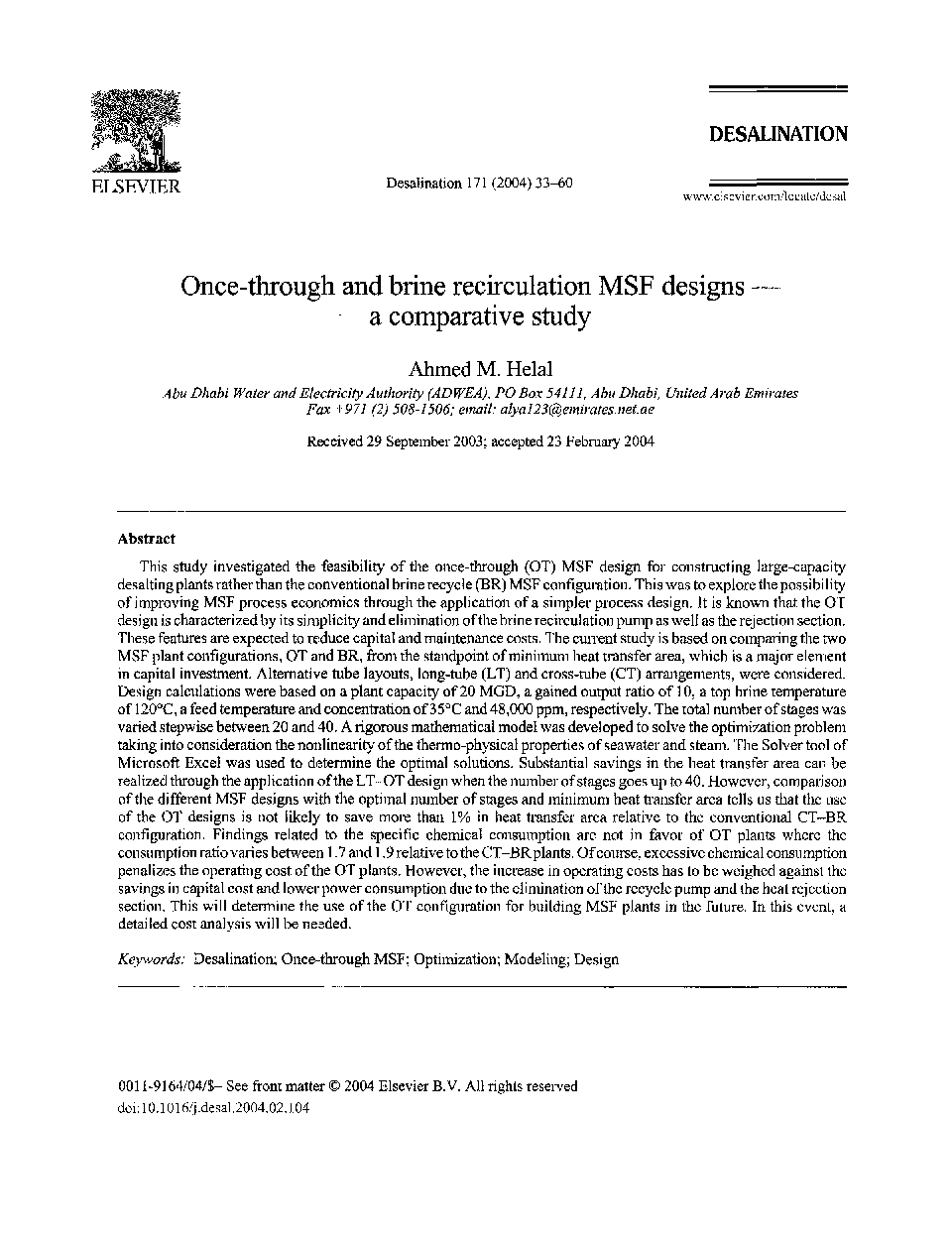| کد مقاله | کد نشریه | سال انتشار | مقاله انگلیسی | نسخه تمام متن |
|---|---|---|---|---|
| 10386229 | 882947 | 2005 | 28 صفحه PDF | دانلود رایگان |
عنوان انگلیسی مقاله ISI
Once-through and brine recirculation MSF designs - a comparative study
دانلود مقاله + سفارش ترجمه
دانلود مقاله ISI انگلیسی
رایگان برای ایرانیان
کلمات کلیدی
موضوعات مرتبط
مهندسی و علوم پایه
مهندسی شیمی
تصفیه و جداسازی
پیش نمایش صفحه اول مقاله

چکیده انگلیسی
This study investigated the feasibility of the once-through (OT) MSF design for constructing large-capacity desalting plants rather than the conventional brine recycle (BR) MSF configuration. This was to explore the possibility of improving MSF process economics through the application of a simpler process design. It is known that the OT design is characterized by its simplicity and elimination of the brine recirculation pump as well as the rejection section. These features are expected to reduce capital and maintenance costs. The current study is based on comparing the two MSF plant configurations, OT and BR, from the standpoint of minimum heat transfer area, which is a major element in capital investment. Alternative tube layouts, long-tube (LT) and cross-tube (CT) arrangements, were considered. Design calculations were based on a plant capacity of 20 MGD, a gained output ratio of 10, a top brine temperature of 120°C, a feed temperature and concentration of 35°C and 48,000 ppm, respectively. The total number of stages was varied stepwise between 20 and 40. A rigorous mathematical model was developed to solve the optimization problem taking into consideration the nonlinearity of the thermo-physical properties of seawater and steam. The Solver tool of Microsoft Excel was used to determine the optimal solutions. Substantial savings in the heat transfer area can be realized through the application of the LT-OT design when the number of stages goes up to 40. However, comparison of the different MSF designs with the optimal number of stages and minimum heat transfer area tells us that the use of the OT designs is not likely to save more than 1% in heat transfer area relative to the conventional CT-BR configuration. Findings related to the specific chemical consumption are not in favor of OT plants where the consumption ratio varies between 1.7 and 1.9 relative to the CT-BR plants. Of course, excessive chemical consumption penalizes the operating cost of the OT plants. However, the increase in operating costs has to be weighed against the savings in capital cost and lower power consumption due to the elimination of the recycle pump and the heat rejection section. This will determine the use of the OT configuration for building MSF plants in the future. In this event, a detailed cost analysis will be needed.
ناشر
Database: Elsevier - ScienceDirect (ساینس دایرکت)
Journal: Desalination - Volume 171, Issue 1, 1 January 2005, Pages 33-60
Journal: Desalination - Volume 171, Issue 1, 1 January 2005, Pages 33-60
نویسندگان
Ahmed M. Helal,